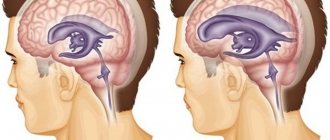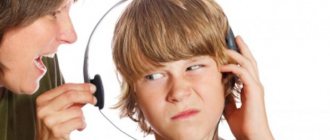There are many types of specific phobias, and each has its own name, which comes to us from the Greek language. Having a fear of birds is called ornithophobia.
A phobia is an excessively expressed fear of a certain object or situation and is the most common anxiety disorder.
The US National Institute of Mental Health estimates that more than 12% of adults will experience a specific phobia at some point in their lives.
If you have ornithophobia, you experience extreme anxiety when you think about or be around birds.
What are the causes of ornithophobia?
Phobias can appear at any age, but most often occur in childhood. What exactly leads to a specific phobia is still unclear.
Possible reasons include:
- Personal experience. If some incident happened to you or you had a negative experience involving birds. You may begin to be afraid of birds if winged ones attack you.
- Learning through observation. If your parents or loved ones had ornithophobia, you can learn this fear from them.
- Information training. After reading or hearing about a negative or dangerous situation involving birds, you may become afraid of them.
- Genetics. We all experience fear and anxiety differently. Some people have an innate tendency to become overly anxious.
Positive Attitudes
- It is necessary to realize that birds cannot cause harm. Literature with information about the behavior algorithms of birds and their basic instincts will help. This will confirm that these creatures do not have any bloodthirsty intentions; rather, they themselves experience a certain fear towards people, showing caution.
- You can analyze your actions in case a bird flies nearby and the likely options for protective actions.
- It is recommended to watch films and television programs about birds, their lifestyle and behavior.
- It happens that fear of birds borders on disgust for them. In this case, it would be appropriate to look at beautiful photographs with species of different birds.
- You should rid yourself of the role of victim by taking an active position or simply ignoring the presence of birds. The spirit of a brave warrior can overcome a phobia. However, such an installation is good if the bird is really not capable of causing real harm. If fear has reason to exist, you should not ignore the manifesting instincts.
Ornithophobia can shrink a person’s life to the size of his fear, when he ceases to be the master of his life and becomes a victim of an obsessive phobia. The choice depends on the victim himself: who does he want to be - the master of the situation or the victim of circumstances?
Symptoms of ornithophobia
Psychological symptoms include:
- an overwhelming feeling of anxiety or fear;
- realizing that your fear or anxiety is exaggerated, but you are unable to control your emotions;
- feeling that you need to run away and hide;
- fear of losing control.
Physical symptoms include:
- cardiopalmus;
- trembling in the body;
- labored breathing;
- sweating;
- dry mouth;
- chest pain or heaviness;
- nausea;
- dizziness.
People with a specific phobia can also take steps to avoid this fear. For example, a person with ornithophobia chooses not to go to the local park because it is home to many pigeons and waterfowl.
Features of pteronophobia
The phobia manifests itself as a panicky fear of birds. The patient tries by any means to avoid encounters with animals. And if some ornithophobes prefer to run away and hide, others show aggression and strive to destroy the object of fear. It is worth noting that both types of patients pose a danger to themselves and others. They both act on the principle “I see the goal - I see no obstacles.”
Somatic symptoms:
- weakness;
- muscle tension;
- increased heart rate;
- shiver;
- sweating;
- icing of extremities;
- breathing problems;
- fainting state;
- loss of consciousness;
- nausea;
- vomit.
Symptoms appear both together and separately. For example, nausea may occur at the sight of a dead bird. Anxiety intensifies when leaving the house (a person begins to nervously look around, looking for birds). Trembling, rapid heartbeat and breathing problems are observed with direct contact with the animal.
It is important! The severity of anxiety depends on the stage of the phobia and ranges from mild anxiety at the sight of a flying animal to panic and flight at the mere thought that it is about to fly out from somewhere.
How to treat ornithophobia?
A consultation with a professional psychiatrist will teach you how to cope with your phobia. Treatment involves one method or a whole complex of them.
Psychotherapy
This treatment system teaches ways to overcome fear and respond alternatively to situations that cause anxiety.
You will be taught some techniques to overcome negative emotions, such as breathing and relaxation techniques. You can use them when you find yourself in a situation that causes a panic reaction.
You will also discover how your thought patterns and overwhelming fear can influence your emotions and behavior. A therapist can help you change these beliefs so that your response to fear will subsequently change.
Exposure therapy may be used as part of the therapy process. It is also called systematic desensitization. It is designed to change your sensitivity towards the object of your fear. The method involves a gradual impact on fear.
For example, a therapist might start with your thoughts about birds, moving on to looking at pictures of objects and ending with walking around the birds and even touching the actual bird itself.
Drug treatment
Medication can sometimes help reduce the anxiety and panic that comes with ornithophobia.
Here are some medications that are prescribed for phobias:
- Antidepressants. A group of antidepressants called selective serotonin reuptake inhibitors (SSRIs) are sometimes prescribed to treat anxiety disorders. Examples include Prozac, Paxil, and Zoloft.
- Sedatives. Benzodiazepines help you relax and calm down. As a rule, they are applied on a short-term basis. Examples include Xanax and Valium.
- Beta blockers. Often used to treat cardiovascular diseases. These medications may help manage symptoms of anxiety such as heart palpitations.
Forecast
Specific phobia (ornithophobia) can be managed if the patient receives proper treatment. If you undergo a course of psychotherapy and take prescribed medications, the prognosis is favorable.
To achieve the best results, it is very important to strictly follow the treatment plan drawn up by the psychotherapist.
Prevention and prognosis
Fear of birds most often occurs in childhood. Therefore, it is recommended to protect children from watching horror films and watching birds being killed in the home. There is no need to intimidate and prohibit touching birds, but you need to carefully introduce the child to the world of birds and talk about its representatives. If a fright does occur, then you need to immediately sort out the situation so that the fear does not take root and turn into a phobia.
When working with a persistent phobia, the first results of treatment are noticeable after a few weeks. To achieve lasting results, it takes an average of six months for self-treatment and 1–3 months when working with a psychologist.
Adults are advised to monitor their health as a preventive measure. Phobias arise with mental exhaustion and neuroses. If the psyche is strong and healthy, then it will have enough strength to cope with fear. Therefore, it is recommended to practice yoga and meditation, get proper rest, and lead a healthy lifestyle.
It is important! Ornithophobia is highly treatable and has a positive prognosis. But success depends on a number of factors: the severity of the disease, the moment of treatment, the patient’s activity, personality and lifestyle, and the support of loved ones. Often a person who is afraid of birds is not understood and is called strange.
Hitchcock's Birds
Alfred Hitchcock is a famous master of suspense, who created more than five dozen films. With the help of his favorite film technique, the director forced people to be in anxious anticipation of an unpredictable outcome. The 47th was his work “Birds”, in which birds appeared in the form of cruel killers.
There is an opinion that this is one of his most mocking films. Many viewers began to be afraid of them in panic after watching the film. This once again proves that Hitchcock was a true master of instilling fear in people.
Treatment of phobias only under the supervision of a physician.
Examples of alarms
The very appearance of a bird in the field of view already gives ornithophobes an unpleasant sensation. Therefore, people try not to visit their habitats - parks, ponds, squares. In addition, even seagulls, crows, etc. flying in the sky can cause discomfort.
Fear is awakened by the cries of birds, the rustling of their wings, and the sight of a fallen wing.
However, the biggest concern is the thought that a bird might touch a person .
It is curious that panic begins at the sight of not only living individuals, but also dead ones, as well as their images. Most often, people treat birds either neutrally or lovingly. Therefore, many simply do not understand the reasons for the ornithophobe’s worries and consider these fears to be unfounded and strange. “Why be afraid of them?” — these are roughly the questions people ask. But no matter what people say, fear of birds is common, and for some, everyday. Stories told by patients during an appointment with a psychologist:
I was always afraid of pigeons and tried not to meet them on my way. They caused wild panic and disgust: it seemed that pigeons were carriers of infections and dirt. Moreover, the anxiety is uncontrollable. Previously, I was only afraid of birds flying overhead, now I can’t see them just pecking at grain in the park. Images and photographs of birds are also not encouraging.
Masha
I have a wild fear of any flying birds. Moreover, the phobia manifested itself already at a conscious age: hooligans broke the windows in the entrance and birds began to fly in there. I came home, and they were flying right above my head. Before entering the entrance, we had to ask our relatives to kick out the birds.
Diana
Ways to deal with the problem
The main thing is not to try to deal with the problem alone. In addition, there is no need to try to forget about the pathology, because it will still make itself felt sooner or later, often very unexpectedly. The problem itself will not go away either. A person can help himself, but only when it comes to his mental balance. To combat discomfort you need to do some things:
- First of all, you need to admit that you have a disorder, at least to yourself. You cannot constantly keep the problem inside yourself, because this leads to the destruction of the psyche.
- Find the reason for fear.
As mentioned above, fear of birds is not a congenital pathology, it is a condition acquired during life. A person must understand that at the moment when an unpleasant situation occurred, the fear mechanism was launched. You need to carefully remember your childhood and adult life. It is possible that previously a person did not experience discomfort while communicating with birds.
It is very important to find the true reasons . If this cannot be done, you need to continue the analysis. There is a possibility that the pathology was not caused by a specific bird, but by its specific actions, for example:
- sounds during flapping of wings;
- her movement along the path;
- diseases carried by birds.
Therefore, it is necessary to conduct a detailed analysis and a series of observations of birds. If possible, it is necessary to collect information about the objects of fear.
In this case, it is quite possible to overcome the pathology. If watching television shows is scary, it is acceptable to look for information in printed sources.
Many psychologists advise trying to accept your fears and make friends with them. Today, it is not difficult to find the sounds of birdsong. You can drink a cup of your favorite tea in a comfortable and pleasant atmosphere and try turning on an audio recording. It is not necessary to listen to it for a long time the first time, but each time you need to increase the duration of the listening session. Gradually, a person will be able to get used to bird sounds, and in real life they will not throw him into panic.











